🗄 Endpoints
Manage all your endpoints seamlessly with our comprehensive tool, covering 16+ protocols at once!

As you use All That Node, the Dashboard (Endpoints) is likely to be one of the pages you visit most frequently. Let's explore what this dashboard consists of and what you can accomplish with it.
Sidebar
You can navigate between the projects you own through the sidebar and access important links such as testnet faucets or All That Node documentation. You can also sign out via the Dashboard.
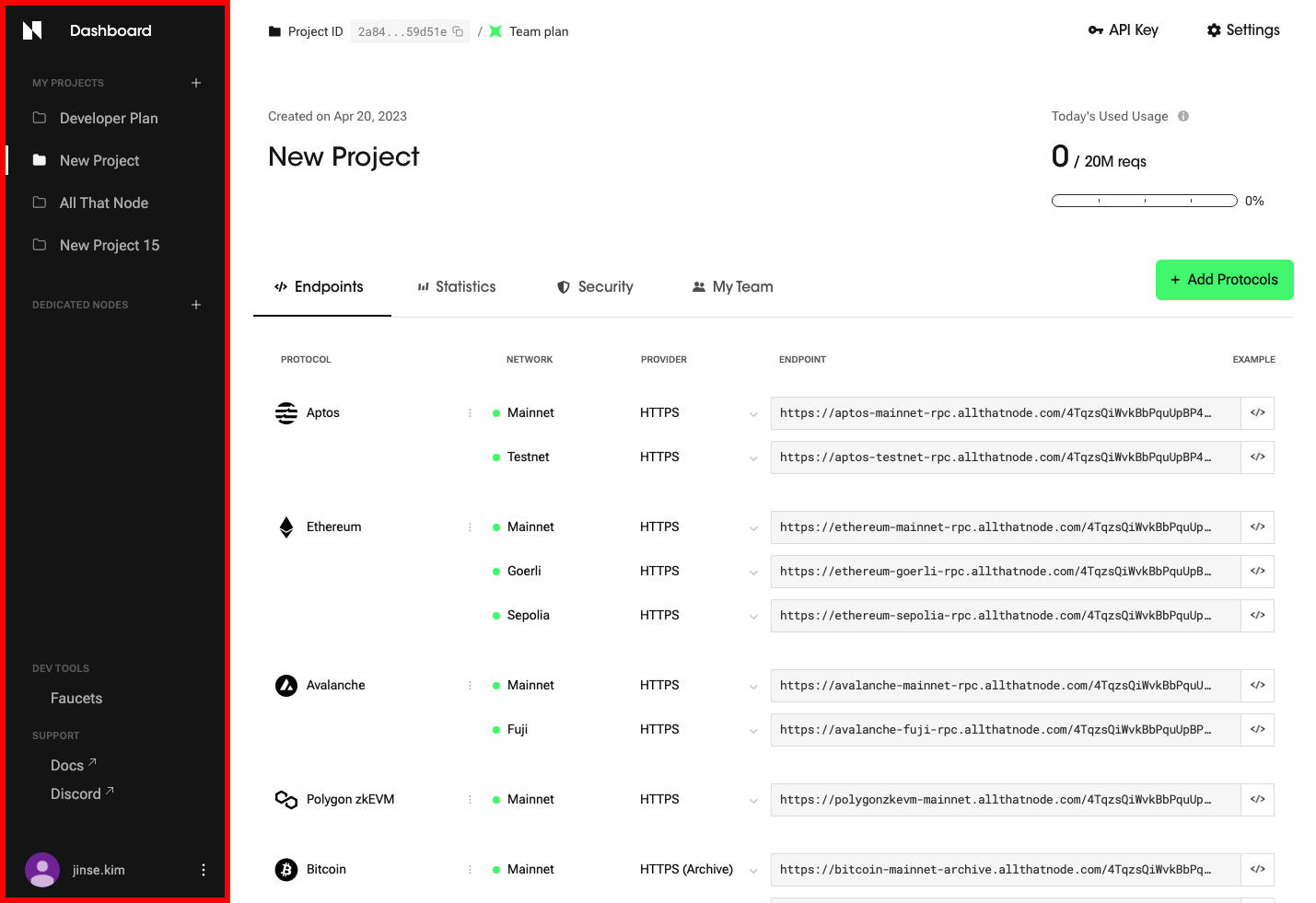
Shared Project Details
1. Project Header
This gives you an overview of the project, including the following items:
- Project name and description
- Project ID
- Subscription information including billing period
- Today's Used Requests

Project Header
2. Endpoints
You can add protocols to your project and view the endpoints directly from the protocol list. Let's begin by examining the list of protocols and endpoints.
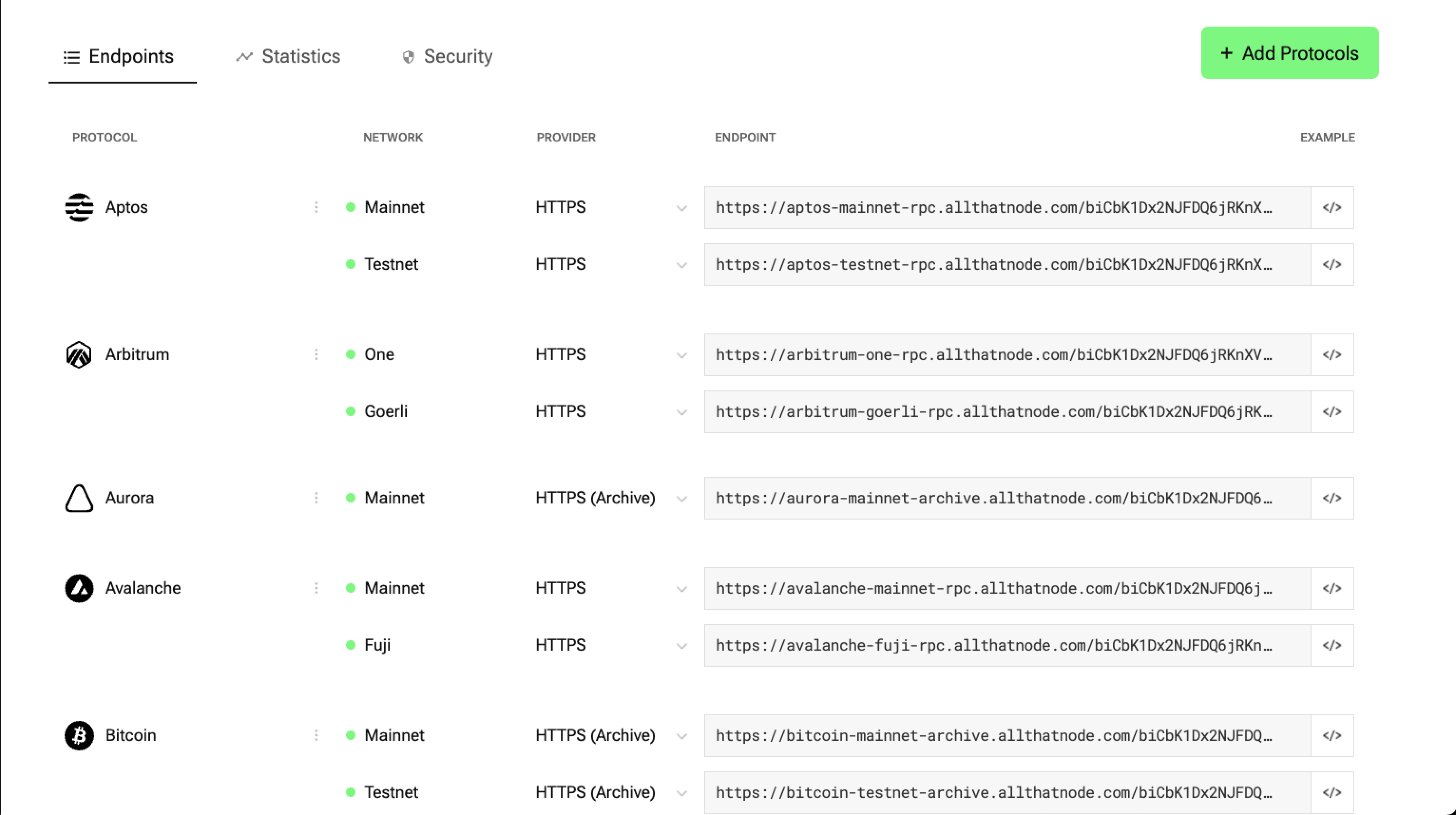
Endpoints
- Protocol Name
The name of a protocol (blockchain) you added. - Network
You have different endpoints depending on the network. The indicator in front of the network name represents the status of the network. If it's green, it means the network is healthy. If it's not, there may be some network issues; in such cases, we will display a detailed tooltip to provide more information. - Provider
This refers to the method used to interact with a blockchain. The providers available can vary, depending on the communication channel supported by the particular blockchain. In most cases, you can expect to find JSON-RPC, REST or Websocket API. - Endpoint
Endpoints are the actual gateways for communication with the blockchain. These are URLs that you can use to directly send requests and retrieve information from the blockchain. Different endpoints will be provided depending on the Protocols, Networks, and Providers. - Example
All That Node provides sample codes for your convenience. Just copy and paste the example code to test whether or not the endpoint is working well.
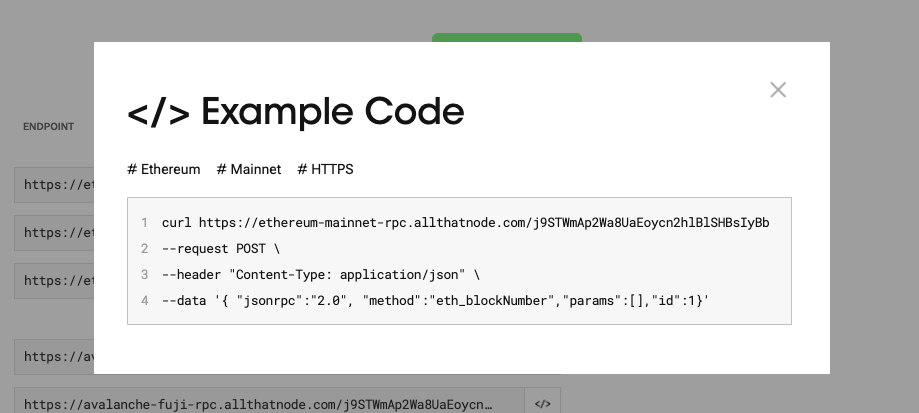
Sample Code - eth_blockNumber
How To Add Endpoints
- Click "Add Protocols."

- Choose which protocols you want to use, then click "Add."
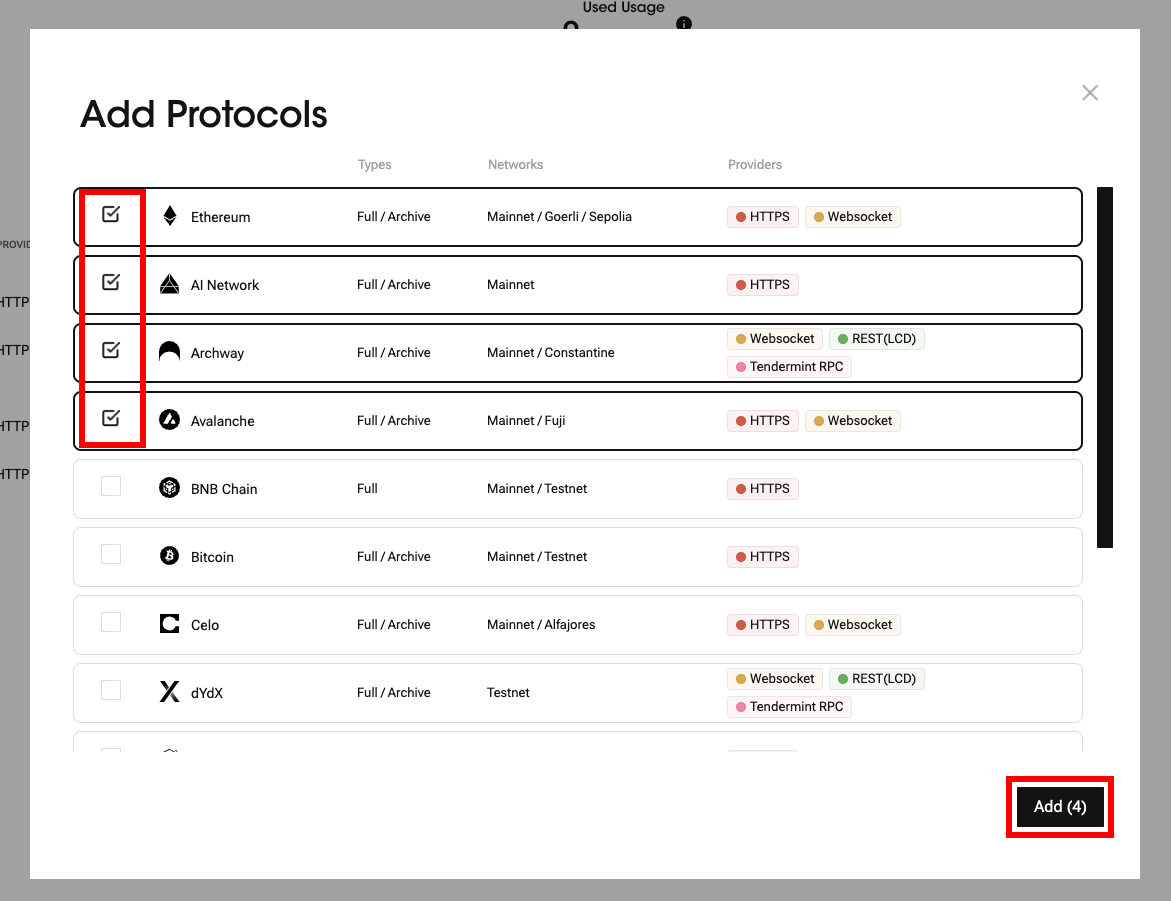
- You can see the endpoints have been successfully added to the dashboard 😎
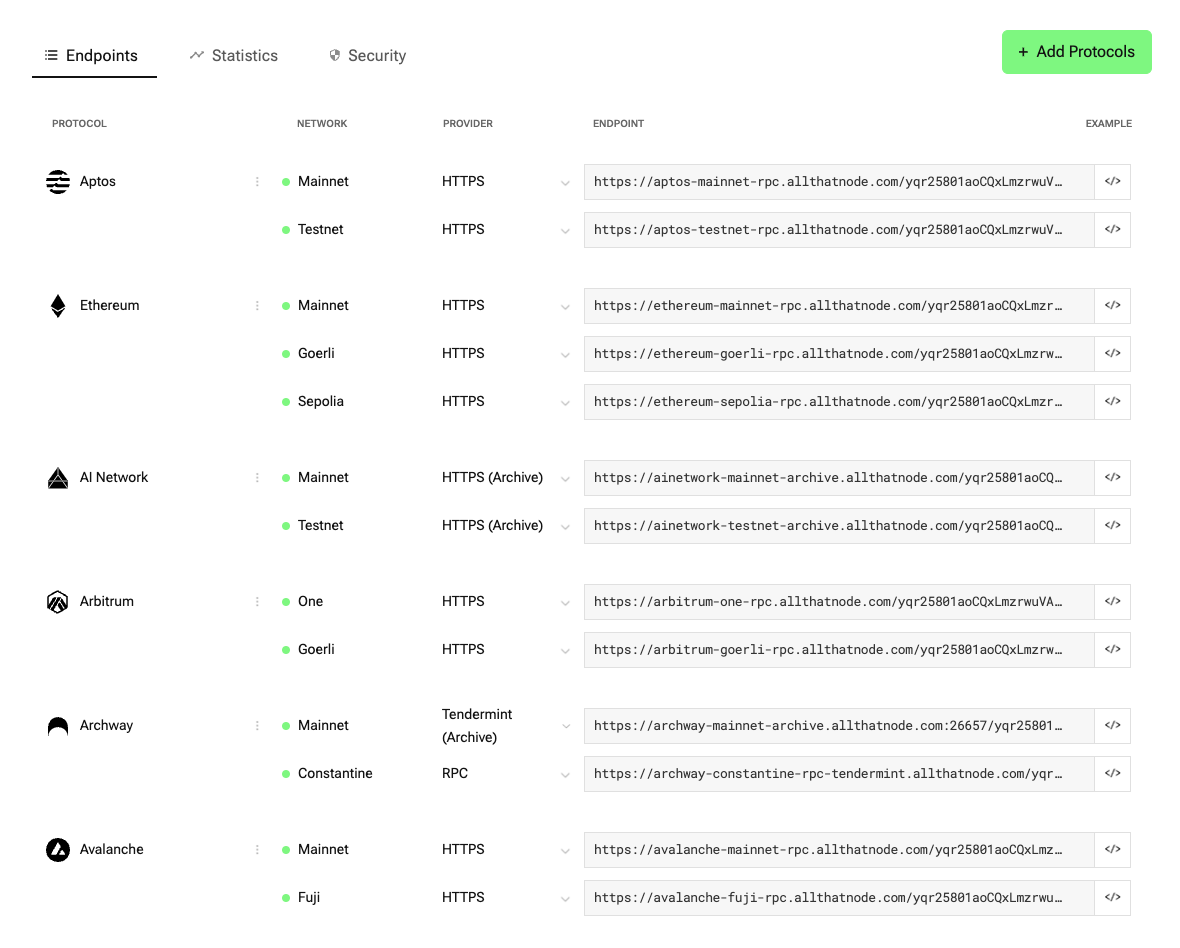
How To Archive Endpoints
- Click the ellipsis menu.

- Next, click "Remove this protocol."

- Then confirm by selecting "Remove" once again. The endpoints of the protocol will be archived. You can re-add the protocol endpoints any time, unless you delete the project.
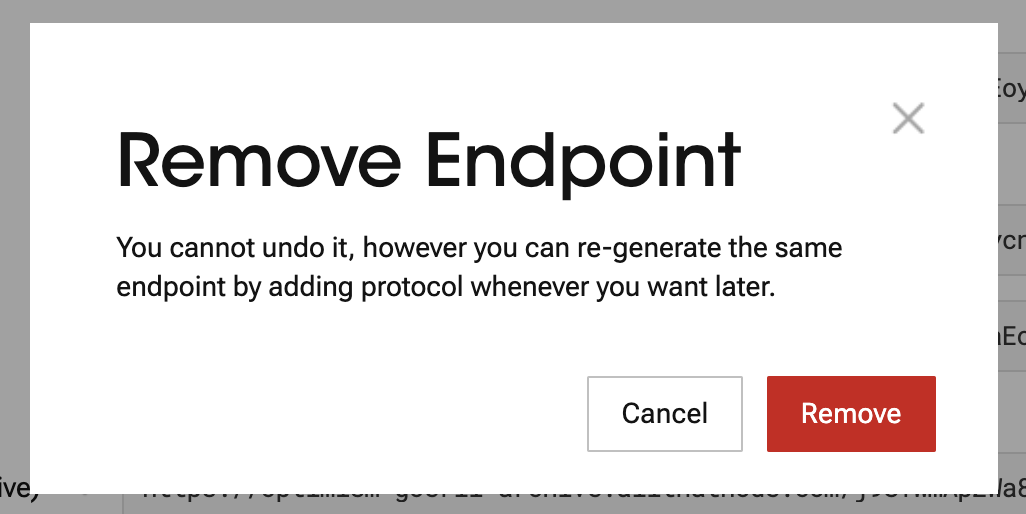
How To Change the API Key
If your API key has been compromised and you suspect unauthorized usage or malicious activity, it is crucial to take immediate action to protect your project. One of the essential steps you can take is changing your API key. By changing the API key, you can invalidate the compromised key and prevent further unauthorized access.
Please check all your dApps that are using the original API Key, and make sure to change the endpoints to the new one immediately to avoid any service interruptions.
- Click the "API Key" button on the dashboard.

- Click "Change," and the API Key will be immediately updated. It may take about 1 to 5 minutes to take effect.
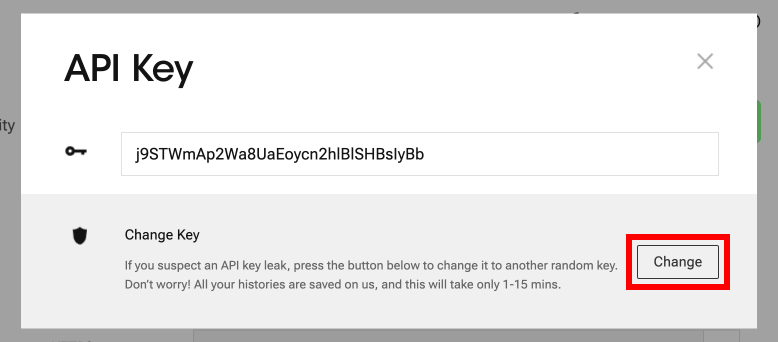
How To Delete the Entire Project
- Click on "Settings."

- Next click "Delete This Project."
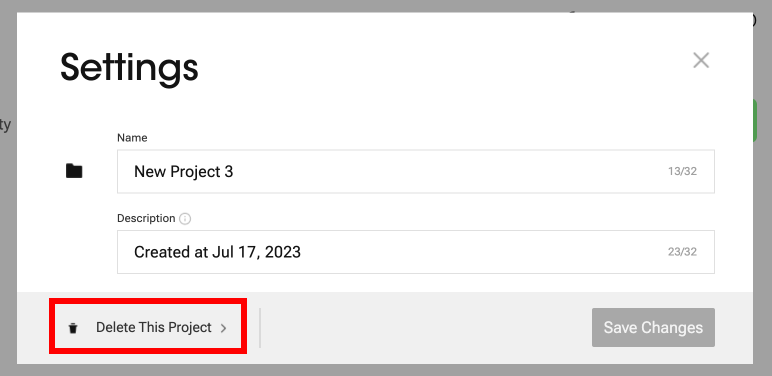
- Click the "Delete" button on the confirmation pop-up. The project will be removed immediately.
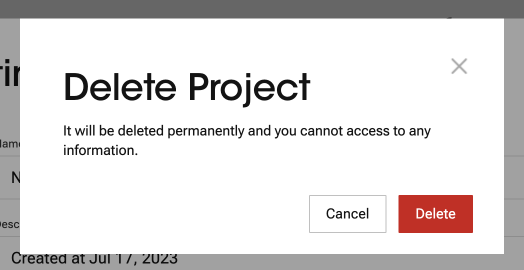
How To Change the Project Name
- Click on "Settings."

- Change the name or description of the project, then click "Save." The change should take effect immediately.
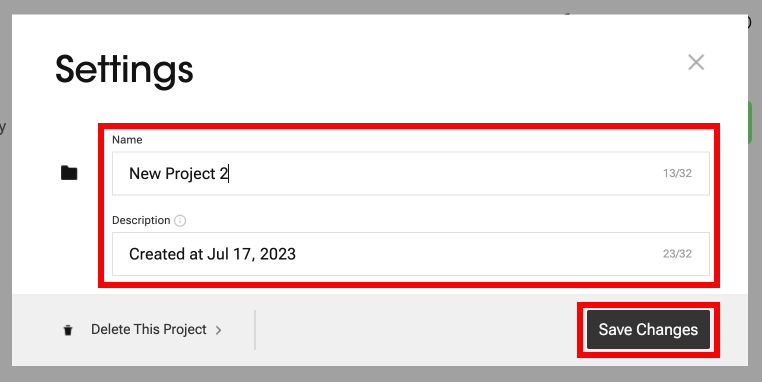
Dedicated Project Details
1. Project Header
You will have an overview of the dedicated project, including following items:
- Project name and description
- Project ID
- Specification of the dedicated node including protocol, network, and region
- Today's Used Usage

2. Endpoints
In the Endpoint tab of a dedicated project, you can find the following information:
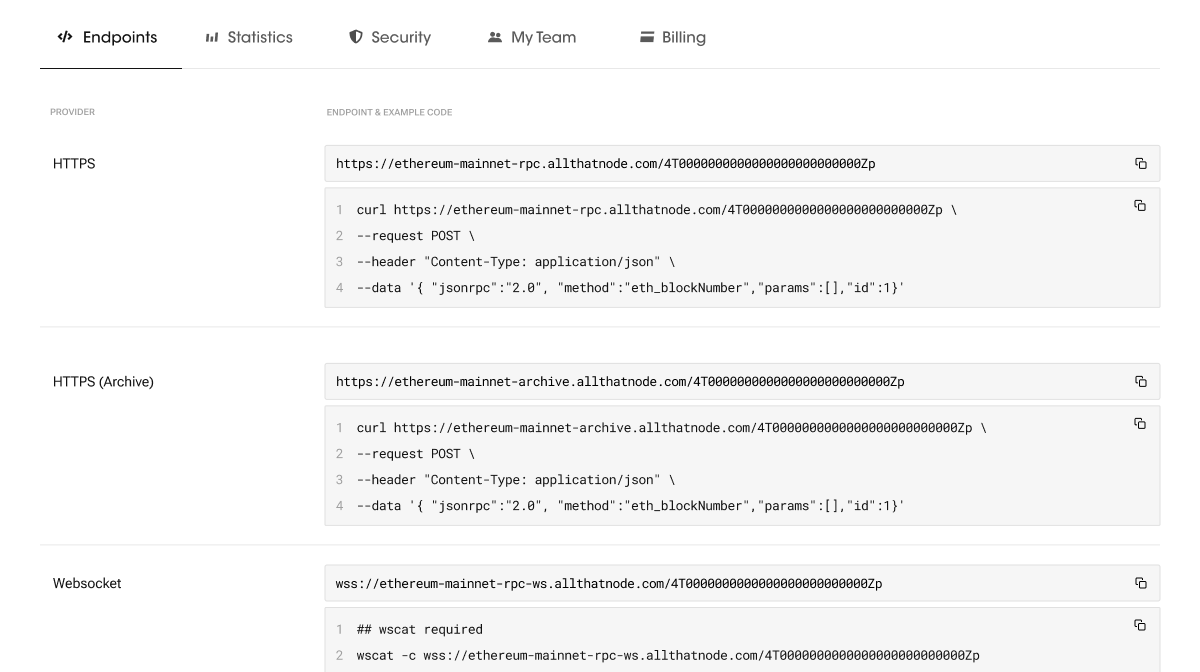
- Provider
This refers to the method used to interact with a blockchain. The providers available can vary, depending on the communication channel supported by the particular blockchain. You can mostly expect to find JSON-RPC, REST or Websocket API. - Endpoint
Endpoints are the actual gateways for communication with the blockchain. These are URLs that you can use directly to send requests and retrieve information from the blockchain. Different endpoints will be provided depending on Protocols, Networks, and Providers. - Example
All That Node provides sample codes for your convenience. Just copy and paste the example code to test that the endpoint is working properly.
How To Change the API Key
The process for changing the API key for a dedicated node project is same as for a shared node. Please refer to the section on changing the API key for a shared node.
How To Delete the Entire Project
The process for deleting the project for a dedicated node project is same as for a shared node. Please refer to the section on deleting the project for a shared node.
How To Change the Name Of Project
The process for changing the name and description of the project in a dedicated node project is same as for a shared node. Please refer to the section on changing the name and description of the project for a shared node.
Updated 7 months ago
